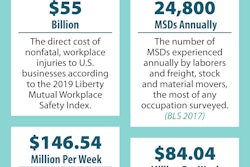
Nearly every day we read headlines about another food recall. Whether it’s chicken nuggets, pasta sauce or romaine lettuce, it seems there are more food recalls than ever before. In this case, perception meets reality: according to a 2019 Public Interest Research Group (PIRG) study, food recalls in the U.S. increased by 10% in the last five years.
Recalls can be detrimental for brands – both financially and reputationally. Pulling a product off the market and compensating those impacted by the product failure can cost millions of dollars. A joint study by the Grocery Manufacturers Association, Covington & Burling LLP and Ernst & Young found that for 77% of food, beverage and consumer product companies that experience a recall, the cost can be as much as $30 million per recall.
Beyond the price tag, recalls can cost the company much more by way of negative brand perception. A recall can be significantly damaging for a brand’s reputation, leading to negative reviews, bad publicity, and, most likely, a loss of customer loyalty. And while stories surrounding recalls often only ever blame the brand, the cause of a recall-inducing issue can sometimes be traced to a single supplier.
The lesson? A brand is only as strong as its weakest supplier. To avoid recalls, brands need to manage quality at every stage of the supply chain. Here’s what to know:
Managing Quality in Growing Supply Chains
Supply chains have become exceptionally large for food brands. Nestle, for instance, has stated that it works with 165,000 direct suppliers and 695,000 farmers.
Visibility into what goes on at each individual supplier can be extremely challenging for a brand, especially when they count hundreds of thousands of suppliers in their network. Food and beverage companies often struggle, specifically, to identify where quality management issues originate. They also come across problems such as effectively collaborating on supplier corrective action requests (SCARs) and seamlessly tracing products that indicate deficiencies. In fact, a 2018 Deloitte survey of more than 500 procurement officers revealed that 65% report having poor supply chain transparency.
Many manufacturers still use manual processes to monitor quality throughout their supply chains. The same Deloitte study also found that only 6% of procurement officers are leading digital transformation initiatives to address supply chain visibility problems, leaving much room for improvement. Unfortunately, the current outdated methods that some manufacturers rely on allow opportunities for problems to slip through the cracks, unnoticed until discovered by customers.
The Impact of Failing to Manage Quality
The cost of poor quality can be steep. While the likelihood of a recall is a primary concern, recalls are only part of the equation when weighing the impact of poor quality management from supplier to customer. Other devastating effects include:
- Time and resources required for correcting defects
- Scrap and rework
- Warranty claim costs
- Production and change order delays
- Unplanned downtime
- Increased complaints and shrinking customer base
- Damage to profitability
- Weakened of brand reputation
With these effects in mind, brands need to consider a more comprehensive and effective approach to quality management that proactively ensures that each supplier in the chain approaches quality seriously as seriously as the primary brand.
Taking an Agile Approach to Quality Management
To keep up with the pace of the issues that arise in today’s supply chain, businesses need top-notch quality management strategies and flexible, comprehensive solutions that enable data-driven quality decision-making. Automated quality management system (QMS) solutions, for example, are critical tools that food manufacturers are beginning to implement.
An automated QMS can adapt quickly to changing market and regulatory environments, significantly improve visibility and enable agile supplier management processes that ensure quality at every step of the product lifecycle. The software can enable companies to more efficiently enter data and incorporate suppliers into their digital quality ecosystem. Automated QMS can also help food and beverage manufacturers digitize safety, environment and quality processes and leverage reporting for more effective action. And businesses are starting to catch on to the benefits: according to Gartner’s Market Guide for Quality Management System Software, the automated QMS software market is growing 31% year over year.
The Q2 2019 Stericycle Recall Index found that 20.5% of FDA food recalls during Q2 were distributed nationwide, which was the highest percentage since 2016. This growing stat is driven by the limited legacy quality processes that many manufacturers still employ—particularly in monitoring quality throughout the supply chain. To avoid the massive ripple effects recalls can cause—such as loss of brand loyalty and compromised revenue—manufacturers must take quality into their own hands and create proactive, nimble quality strategies. By implementing the right technology, food and beverage companies can quickly, efficiently and confidently manage quality across their networks, identifying problematic links in the supply chain that put their brands and their customers at risk.













![Pros To Know 2026 [color]](https://img.sdcexec.com/mindful/acbm/workspaces/default/uploads/2025/08/prostoknow-2026-color.mduFvhpgMk.png?ar=16%3A9&auto=format%2Ccompress&bg=fff&fill-color=fff&fit=fill&h=135&q=70&w=240)




